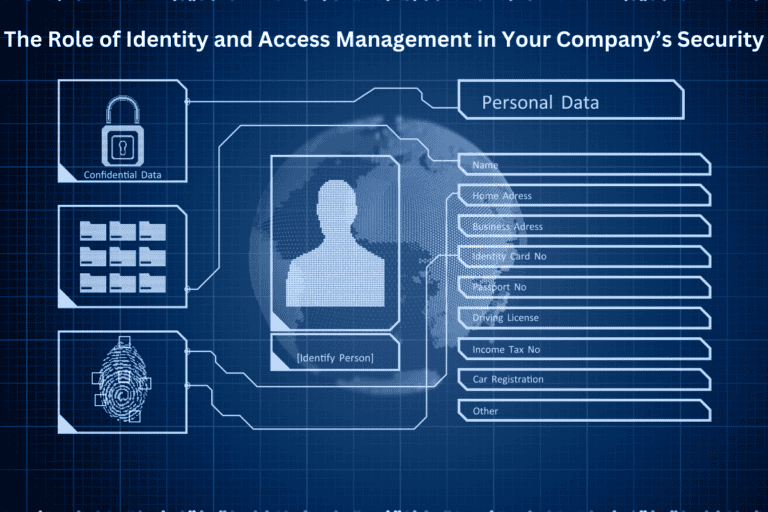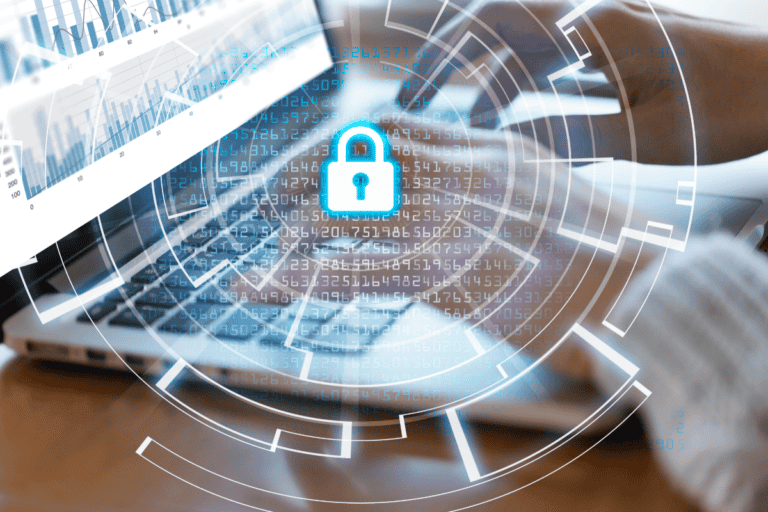Cybersecurity Compliance Training: Protecting Data In The Us Business Landscape
Coincidentally, as you navigate through the vast digital landscape of the United States business world, there lies a lurking danger that could potentially disrupt your entire operation.
The threat of cyber attacks and data breaches looms ominously, waiting to strike at any vulnerable point within your organization.
To safeguard your valuable data and protect your business from devastating consequences, it is imperative to invest in cybersecurity compliance training.
In today’s interconnected world, where information flows freely across networks and systems, the importance of data protection cannot be overstated.
Countless businesses have suffered severe financial losses, reputational damage, and legal repercussions due to compromised security measures.
By implementing proper cybersecurity compliance training for all employees within your organization, you can fortify your defenses against potential threats and ensure that sensitive data remains safe from unauthorized access or malicious activities.
This comprehensive training equips individuals with the necessary knowledge and skills to identify and prevent cyber threats effectively.
From understanding common attack vectors to employing robust security protocols, every member of your team becomes an active participant in maintaining a secure digital environment for your business operations.
So don’t leave anything to chance – take control of your data protection efforts by investing in cybersecurity compliance training today.
Key Takeaways
- Cyber attacks and data breaches pose a significant threat to businesses in the US, leading to financial losses, reputational damage, and legal repercussions.
- Data protection is crucial in today’s interconnected world, and understanding the importance of data protection is necessary to safeguard businesses and avoid fines and reputation damage.
- Data privacy regulations like GDPR and CCPA require responsible handling of personal data, emphasizing the need for cybersecurity compliance training.
- Implementing cybersecurity best practices, such as access controls, encryption, firewalls, and antivirus software, along with regular training sessions and ongoing communication, are essential for protecting data in the US business landscape.
Understanding the Importance of Data Protection
You need to understand the importance of data protection in order to safeguard your business and avoid devastating consequences.
In today’s digital age, data privacy regulations have become increasingly stringent, with governments around the world enacting laws to protect individuals’ personal information. Failure to comply with these regulations can result in hefty fines and damage to your company’s reputation.
By implementing cybersecurity best practices, you can ensure that sensitive data is kept secure and confidential.
Data privacy regulations such as the General Data Protection Regulation (GDPR) in Europe and the California Consumer Privacy Act (CCPA) in the United States require businesses to handle personal data responsibly. These regulations outline specific guidelines for collecting, storing, and processing personal information. Failing to adhere to these guidelines not only puts your customers’ trust at risk but also exposes your organization to legal liabilities.
Implementing cybersecurity best practices is vital for protecting your business from cyber threats. This includes regularly updating software and systems, using strong encryption methods, implementing multi-factor authentication, and conducting employee training on recognizing phishing attempts or other social engineering tactics. By adopting these measures, you can significantly reduce the risk of a data breach or cyberattack.
Understanding the importance of data protection sets the foundation for identifying and preventing cyber threats within your business environment. It allows you to develop a proactive mindset when it comes to safeguarding sensitive information. Through proper training and adherence to cybersecurity best practices, you can create a robust defense system against potential threats while ensuring compliance with relevant data privacy regulations.
Transition into subsequent section: Now that you grasp why data protection is crucial for your business’s success, let’s move on to identifying and preventing cyber threats that may target your organization’s valuable assets.
Identifying and Preventing Cyber Threats
By recognizing and thwarting cyber threats, organizations can build a sturdy digital fortress to defend against malicious attacks. Preventing insider threats is crucial in maintaining data security. These threats arise when individuals within an organization misuse their access privileges to exploit sensitive information.
To mitigate this risk, companies must implement effective security measures such as access controls, encryption, and regular monitoring of user activities. By closely monitoring and controlling employee access to data, organizations can significantly reduce the likelihood of insider threats.
In addition to preventing insider threats, organizations must also be proactive in identifying and preventing external cyber threats. Hackers are constantly evolving their tactics and finding new ways to breach systems and steal valuable data. Implementing effective security measures is essential for staying one step ahead of these adversaries. This includes utilizing firewalls, intrusion detection systems, antivirus software, and regularly updating systems with the latest patches and security updates.
Equipping employees with necessary knowledge and skills is vital in ensuring the effectiveness of cybersecurity measures. Without proper training, even the most sophisticated security systems can be rendered useless if employees inadvertently fall victim to phishing scams or other social engineering techniques used by hackers. Therefore, it’s imperative for organizations to provide comprehensive cybersecurity awareness training programs that educate employees on best practices for identifying potential cyber threats and responding appropriately.
Transition: By implementing robust security measures and providing employees with the necessary knowledge and skills, organizations can create a strong defense against cyber threats. However, it’s equally important to continuously adapt these measures as new technologies emerge and hackers develop more advanced attack methods.
Equipping Employees with Necessary Knowledge and Skills
Equipping employees with the necessary knowledge and skills is vital in ensuring the effectiveness of cybersecurity measures, as it empowers them to identify and respond appropriately to potential cyber threats. To enhance employee awareness and training effectiveness, consider the following:
- Regular Training Sessions: Conducting regular cybersecurity training sessions for employees is crucial in keeping them updated with the latest threats and prevention techniques. These sessions should cover topics such as phishing attacks, malware detection, password hygiene, and social engineering tactics. By providing comprehensive training, employees will be better equipped to recognize suspicious activities and take appropriate action.
- Simulated Phishing Exercises: Implementing simulated phishing exercises can significantly improve employee awareness and response to real-world phishing attempts. These exercises involve sending fake phishing emails to employees and monitoring their responses. This helps identify weak points in employee behavior that can be addressed through further training or reinforcement.
- Interactive Learning Modules: Utilize interactive learning modules that engage employees in hands-on activities related to cybersecurity best practices. These modules could include quizzes, case studies, and simulations that allow employees to apply their knowledge in realistic scenarios.
- Ongoing Communication: Establish a culture of ongoing communication regarding cybersecurity within the organization. This can include regular email updates on emerging threats, reminders about security protocols, and open channels for reporting suspicious activities.
By equipping employees with the necessary knowledge and skills through effective training programs, organizations can create a strong defense against cyber attacks. With heightened employee awareness of potential threats and the ability to respond appropriately, businesses are better positioned to safeguard their data assets from malicious actors without compromising productivity or efficiency.
Transition into the subsequent section about ‘creating a strong defense against cyber attacks’ by emphasizing how well-trained employees play a vital role in building this defense mechanism.
Creating a Strong Defense Against Cyber Attacks
Fortifying the organization’s defenses against cyber attacks is a fundamental step towards ensuring its digital security. Implementing robust security measures is crucial in safeguarding sensitive data and preventing unauthorized access. This includes implementing firewalls, intrusion detection systems, and encryption protocols to protect networks and data from potential threats. Additionally, organizations should regularly update their software and firmware to patch vulnerabilities that could be exploited by hackers.
Developing incident response strategies is equally important in creating a strong defense against cyber attacks. Organizations must have well-defined procedures in place to effectively respond to security incidents and minimize the impact of an attack. This involves establishing a dedicated team responsible for monitoring, detecting, analyzing, and responding to any potential threats or breaches. Regular training sessions should also be conducted to ensure employees are aware of the appropriate actions to take in case of an incident.
By implementing robust security measures and developing effective incident response strategies, organizations can significantly reduce the risk of falling victim to cyber attacks. However, it is important to note that digital threats are continuously evolving, requiring constant monitoring and adaptation of defense mechanisms. In the subsequent section about ‘minimizing the risk of data breaches,’ we will explore additional steps organizations can take to further enhance their overall cybersecurity posture without compromising business operations or customer experience.
| Steps for Creating a Strong Defense Against Cyber Attacks | Benefits |
|---|---|
| Implement robust security measures such as firewalls | Protects networks from unauthorized access |
| Update software and firmware regularly | Patches vulnerabilities that could be exploited by hackers |
| Develop incident response strategies | Minimizes impact of security incidents |
In order to minimize the risk of data breaches…
Minimizing the Risk of Data Breaches
To effectively minimize the risk of data breaches, you need to prioritize proactive monitoring and continuous adaptation of your defense mechanisms.
Start by conducting a thorough risk assessment to identify potential vulnerabilities in your systems and networks. This involves analyzing your infrastructure, applications, and processes to determine where weaknesses may exist. By understanding these risks, you can develop targeted strategies to mitigate them.
Once you have identified potential vulnerabilities, it’s crucial to establish an effective incident response plan. This plan should outline the steps to be taken in the event of a data breach or security incident. It should include protocols for detecting and containing breaches, as well as guidelines for notifying affected parties and managing the aftermath.
Regularly rehearsing this plan through simulated exercises will help ensure that your team is prepared to respond swiftly and effectively in case of an actual breach.
In addition to proactive monitoring and incident response planning, it’s essential to continually adapt your defense mechanisms as new threats emerge. Cybercriminals are constantly evolving their tactics, so staying one step ahead requires ongoing vigilance.
Regularly update your security software and systems, patch any vulnerabilities promptly, and stay informed about emerging threats through industry publications and information sharing networks.
By prioritizing proactive monitoring, incident response planning, and continuous adaptation of your defense mechanisms, you can significantly minimize the risk of data breaches within your organization.
Frequently Asked Questions
What are the legal consequences for businesses that fail to comply with cybersecurity regulations?
Failing to comply with cybersecurity regulations can result in severe legal penalties and financial repercussions for businesses. Non-compliance may lead to fines, lawsuits, reputational damage, and potential loss of business opportunities.
How can businesses ensure that their employees are consistently following cybersecurity protocols?
To ensure consistent adherence to cybersecurity protocols, businesses must train their employees effectively. Think of it like building a strong fortress. Employee training acts as the foundation and walls, protecting valuable data from potential threats.
Are there any industry-specific cybersecurity compliance requirements?
Industry specific cybersecurity regulations exist in various sectors, such as healthcare. The healthcare sector faces unique cybersecurity compliance challenges due to the sensitive nature of patient data and the increasing frequency of cyber attacks targeting medical facilities.
How often should businesses conduct cybersecurity risk assessments?
Regularly conducting cybersecurity risk assessments is crucial for businesses to identify vulnerabilities and mitigate potential threats. Best practices recommend performing these assessments on a regular frequency to ensure the security of sensitive data.
What steps can businesses take to recover from a data breach and minimize the damage?
To recover from a data breach and minimize damage, businesses should immediately isolate affected systems, assess the extent of the breach, notify relevant stakeholders, implement security patches, conduct forensic analysis, enhance monitoring capabilities, and update incident response plans.
Conclusion
In conclusion, cybersecurity compliance training is a critical component in safeguarding data within the US business landscape. By understanding the importance of data protection and identifying and preventing cyber threats, organizations can create a strong defense against potential attacks.
Equipping employees with the necessary knowledge and skills through comprehensive training programs ensures that they become active guardians of sensitive information.
Think of cybersecurity compliance training as an impenetrable shield that fortifies your organization’s digital fortress. Just as knights wielded their swords to defend castles, your employees will be armed with cutting-edge techniques to ward off cybercriminals. They will become the gatekeepers who tirelessly stand guard, protecting valuable data from malicious actors lurking in the shadows.
By investing in cybersecurity compliance training, businesses minimize the risk of data breaches, which could have far-reaching consequences on financial stability and reputation. It’s imperative for companies to prioritize this aspect and empower their workforce with the knowledge needed to navigate the ever-evolving threat landscape.
Remember, a well-prepared team is like a vigilant sentry; it can detect even the subtlest signs of danger and thwart any attempts at unauthorized access.
So, embrace cybersecurity compliance training wholeheartedly – it’s more than just a mere obligation; it’s an opportunity to empower your workforce with essential tools for guarding against evolving cyber threats.
Let us not forget that behind every successful business lies a robust system of protection that safeguards its most valuable asset: data.
As you embark on this journey towards enhanced security measures, remember that by investing in your employees’ education today, you’re securing a brighter future for your organization tomorrow.








